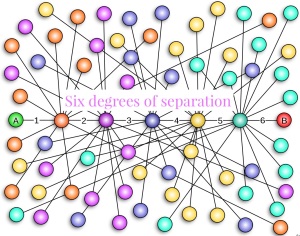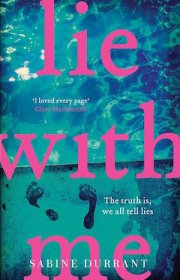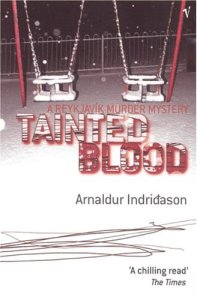The best of life is lived quietly, where nothing happens but our calm journey through the day, where change is imperceptible and the precious life is everything…

Today marks the 18th anniversary of Irish writer John McGahern’s death. Long-time followers of this blog, particularly when it was hosted on Typepad, will know that McGahern is my favourite writer.
McGahern was born in County Leitrim in 1934, the eldest child of seven. He was raised on a farm run by his mother, a part-time primary school teacher, while his father, a garda sergeant, lived in the garda barracks at Cootehall in County Roscommon. Following the untimely death of his mother in 1944, McGahern and his siblings moved into the garda barracks to live with their father.
These details are important because they shape so much of his writing; a quest to understand his father’s distant, often cruel behaviour and to make sense of his mother’s passing.
His output was small — just six novels The Barracks, The Dark, The Leavetaking, The Pornographer, Amongst Women, and That They May Face the Rising Sun (published as By the Lake in the US) — but each one beautifully polished and eloquent, with an emphasis on nature, rural Irish life, family dynamics and the tension between tradition and modernity.
He was also an acclaimed short story writer.
A new-to-me discovery
I discovered McGahern in the British summer of 2006 when I read his debut novel The Barracks. I’m not entirely sure why I came to read him, other than his death, aged 71, was relatively recent and he had been described in various newspaper articles as one of the most important writers of the 20th century.
In his obituary, published in The Guardian, he was hailed as “arguably the most important Irish novelist since Samuel Beckett”.
As a lover of Irish literary fiction, I was amazed I’d never heard of him before and I suspect that’s why I bought his first book, published in 1963, to see what all the fuss was about.
I loved The Barracks so much that I bought his entire backlist (of novels) in one hit. Unusually, they were all sitting on the shelves at Waterstone’s Picadilly, almost as if they were waiting for me to take them home. I also bought his memoir, imaginatively titled Memoir, one of the most affecting books I have ever read.
Over the next 12 months, I devoured all the novels bar one because I didn’t want to be in a position where I had no more McGahern books left to read. I’m a “completist” but even so, all these years later, The Pornographer still sits on my bookshelves unread. Perhaps this year I will be brave enough to read it.
I might even dig out some of his short story collections because since discovering McGahern I have long got over my prejudice against the short story form!
A visit to McGahern country
In March 2011, I had the privilege of going on a self-guided trip to “McGahern country” with my partner Mr Reading Matters. I wrote about the short trip on my old blog, long since deleted, but I thought now was a good time to resurrect it, particularly as I have seen reviews of his work on other book blogs in recent weeks.
I think he’s also come to many people’s attention via the success of Irish writer Claire Keegan, who champions his work and is clearly influenced by his style and themes.
Whatever the case, it always delights me to see readers discovering his writing and appreciating its quiet beauty (and dark overtones) for the first time.

On our trip all those years ago, we stayed at the rather wonderful Lough Rynn Castle Hotel, in Mohill, Co. Leitrim, deliberately chosen because it housed a small library dedicated to John McGahern. It was the perfect base to explore the area, where the author spent much of his life.

The John McGahern Library was opened by the then-Irish Prime Minister Bertie Ahern in November 2006 in the presence of McGahern’s widow, Madeline.
It’s housed in a small but sumptuous room on the hotel’s ground floor. The colour scheme is a mix of deep ruby reds and golds, complemented by mahogany timber furniture and glass-fronted bookshelves.
The shelves are lined with various hardcover books, mainly Irish novels and biographies. There is supposedly a selection of rare first edition volumes among them, but I was too scared to touch anything lest I caused damage — and, anyway, many of the titles were behind glass.

Of course, a library dedicated to John McGahern has to include copies of his books and a collection of first editions can be seen in a glass display case over which a framed portrait of the great man hangs on the wall.
With its touch of luxury — the stiff-backed chairs, the small chandelier, the fireplace — I’m sure it’s a long way from the priest’s library that McGahern used to riffle through as a child but it is a truly beautiful and fitting memorial to one of Ireland’s greatest writers.

Glorious weather
During our trip, the weather was glorious — blue skies and sunshine, so unusual for Ireland where it can teem with rain for days on end. And as we pootled along the roads of McGahern’s native Leitrim we got a real sense of the beautiful landscape — rolling green hills, woodlands and lakes — that the writer loved so much.
Of course, there’s no “McGahern Country” map you can follow ( certainly in 2011, Discover Ireland hadn’t wised up to that one yet, but perhaps things have changed?), so much of our adventure was based on internet research and reference to a tour that my friend Trevor Cook had made the year before.
We got lost a few times and had one hair-raising episode in our hire car when we thought the wilds of rural Ireland would swallow us whole. We were looking for the farmhouse that McGahern had supposedly spent some time in as a child, but the gravel road we followed — and which we had spent a good half-hour looking for — led us a merry dance through bumpy terrain and wild woodland. Eventually, it became a boreen (rural track) masquerading as a swamp.

As the hedgerows closed in around us and the surface of the track got muddier and muddier, it seemed inevitable that we were going to get bogged (not long after the photograph above was taken the road conditions deteriorated drastically). But Mr Reading Matters, who was driving, held his nerve and pushed on through (I kept my eyes closed). And then, just when we least expected it, we turned a corner where there was a quiet stretch of tarmac waiting to meet us. The sense of relief was enormous.
We never did find that farmhouse.
McGahern landmarks
But we did find plenty of other landmarks associated with McGahern. Here are some of them:

This plaque on the footpath in Ballinamore commemorates McGahern’s last novel, That They May Face the Rising Sun, which was first published in 2001. It sits at the foot of a memorial bench (see the photograph at the top of this post).

Fenagh Abbey, in Fenagh, was built on the site of a 6th-century monastery founded by St Caillin. It sits atop a hillside overlooking the local village and surrounding landscape. In That They May Face the Rising Sun, this is the graveyard where the character Johnny Murphy is buried.

The barracks in Cootehall, just over the border in Co. Roscommon, where McGahern’s father, a garda sergeant, was based and where the family, including John, lived after the death of his mother. This is also the basis for the barracks in McGahern’s debut novel of the same name.

This is McGahern’s plain but dignified grave. He is buried alongside his mother, who died of breast cancer when he was 10 years old, in the grounds of St Patrick’s church, Aughawillan. The inscription on the cross reads:
Susan McManus McGahern, NT
2 May 1902 – 28 June 1944John McGahern
12 November 1934 – 30 March 2006
Find out more
- You can read all my reviews of McGahern’s work on my McGahern page.
- Trevor Cook’s piece on how John McGahern can help you better understand life is also worth a read.
- And McGahern’s obituary published in The Guardian is worth revisiting if you wish to find out more about his life and his work.
Please excuse the poor quality of the photographs in this post. They were originally taken on a digital camera (not a smartphone) in 2011 and have been “rescued” from the Internet Archive website Wayback Machine because I no longer hold the originals.
 I wrote this post for Cathy’s #ReadingIrelandMonth24. You can find out more about this annual blog event at Cathy’s blog 746 Books.
I wrote this post for Cathy’s #ReadingIrelandMonth24. You can find out more about this annual blog event at Cathy’s blog 746 Books.





























































